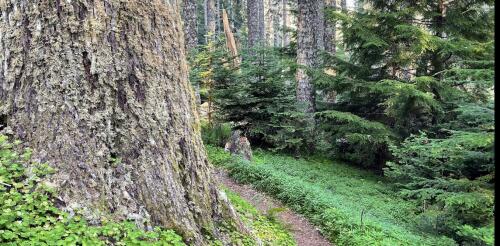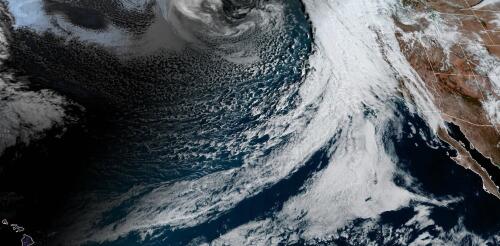Climate change
Climate activism has been on a wild ride lately, from the shock tactics of young activists throwing soup on famous paintings to a surge in climate lawsuits by savvy plaintiffs. While some people consider disruptive “antics” like attacking museum artwork with food to be confusing and alienating for the public, research into social movements shows there is a method to the seeming madness. By strategically using both radical forms of civil disobedience and more mainstream public actions, such as lobbying and state-sanctioned demonstrations, activists can grab the public’s attention while making less aggressive tactics seem much more acceptable. Two activists were arrested after throwing tomato soup on Vincent Van Gogh’s glass-covered ‘Sunflowers’ at the National Gallery in London in 2023 in a bid to draw media attention so they could talk about oil’s role in climate change. Just Stop O...
Forests are an essential part of Earth’s operating system. They reduce the buildup of heat-trapping carbon dioxide in the atmosphere from fossil fuel combustion, deforestation and land degradation by 30% each year. This slows global temperature increases and the resulting changes to the climate. In the U.S., forests take up 12% of the nation’s greenhouse gas emissions annually and store the carbon long term in trees and soils. Mature and old-growth forests, with larger trees than younger forests, play an outsized role in accumulating carbon and keeping it out of the atmosphere. These forests are especially resistant to wildfires and other natural disturbances as the climate warms. Most forests in the continental U.S. have been harvested multiple times. Today, just 3.9% of timberlands across the U.S., in public and private hands, are over 100 years old, and most of these areas hold relatively little carbon compared with their potential. The Biden administration is m...
One of the most robust measures of Earth’s changing climate is that winter is warming more quickly than other seasons. The cascade of changes it brings, including ice storms and rain in regions that were once reliably below freezing, are symptoms of what I call “warming winter syndrome.” Wintertime warming represents the global accumulation of heat. During winter, direct heat from the Sun is weak, but storms and shifts in the jet stream bring warm air up from more southern latitudes into the northern U.S. and Canada. As global temperatures and the oceans warm, that stored heat has an influence on both temperature and precipitation. The U.S. has been feeling this warming in the winter of 2023-24, the warmest on record for the Lower 48 states. Snowfall has been below average in much of the country. On the Great Lakes, the ice cover has been at record lows. Late February saw a wave of summerlike temperatures spread up into the central and eastern U.S., along wi...
Extremely cold Arctic air and severe winter weather swept southward into much of the U.S. in mid-January 2024, breaking daily low temperature records from Montana to Texas. Tens of millions of people were affected by dangerously cold temperatures, and heavy lake-effect snow and snow squalls have had severe effects across the Great Lakes and Northeast regions. These severe cold events occur when the polar jet stream – the familiar jet stream of winter that runs along the boundary between Arctic and more temperate air – dips deeply southward, bringing the cold Arctic air to regions that don’t often experience it. Surface temperatures at 7 a.m. EST on Jan. 16, 2024. Temperatures below freezing are in blue; those above freezing are in red. The jet stream is indicated by the light blue line with arrows. Mathew Barlow/UMass Lowell, CC BY An interesting aspect of these events is that they...
Millions of Californians were under flood alerts as a powerful atmospheric river brought heavy rain to the West Coast in early February 2024. Los Angeles saw one of its wettest days on record with over 4 inches of rain on Feb. 4. Other communities were hit by more than 12 inches of rain and reported widespread flooding. Debris and mudslides shut down sections of highways and roads into Malibu. It was the latest in a series of atmospheric rivers to bring extreme rainfall to the West Coast. While these storms are dreaded for the damage they can cause, they are also essential to the region’s water supply, particularly in California, as Qian Cao, a hydrologist at the University of California, San Diego, explains. What are atmospheric rivers? An atmospheric river is a narrow corridor or filament of concentrated water vapor transported in the atmosphere. It’s like a river in the sky that can be 1,000 miles long. On average, atmospheric rivers have about twice the regul...




